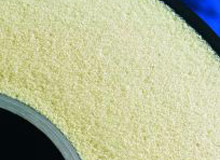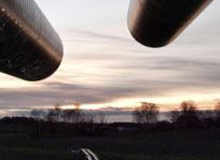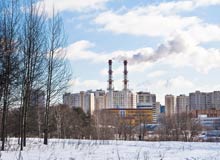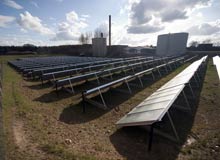The purpose of this project was to gegraphically map heat demand, heat supply, heat ressources and transmission and distributionfacilities in Denmark.
In the project GIS was used to calculate costs of expansion of district heating. ArcGIS tool was used to delineate DH areas, areas that are sharing a border with DH areas and Individual areas, which are far away from DH areas. Costs of transmission, distribution infrastructure were included. Marginal cost curves for DH expansion were obtained as a result of this calculation. Current and future costs of supplying energy were not taken into account in this analysis, but were included in optimization tool TIMES, which was built at the Energy Systems Analysis group, Technical University of Denmark.
As part of the project, potentials for heat savings in Danish building stock. Building stock was divided by time periods, usage types and temperature regions. Calculations were done in 4 steps:
1. Identifying current heat demand including demand for domestic hot water,
2. Calculating effect of heat saving measures (replacing windows, adding insulation to walls, floors, roofs, replacing ventilation systems),
3. Calculating full and marginal costs of heat saving measures,
4. Calculating annualized costs of heat saving measures.
Marginal cost curves of heat saving measures were obtained. These curves were sent to TIMES model for Denmark that used them to make optimal choice between savings, DH expansion and investment in supply technologies.
Related articles
Use of Danish Heat Atlas and energy system models for exploring renewable energy scenarios, Presentation at SDEWES conference september 22nd to september 27th 2013 in Dubrovnik
Use of Danish Heat Atlas and energy system models for exploring renewable energy scenarios by Stefan Petrovic and Kenneth Karlsson. Article for the SDEWES conference 22nd-27th september 2013 in Dubrovnik.
Tweet
FUNDED BY
![]()







